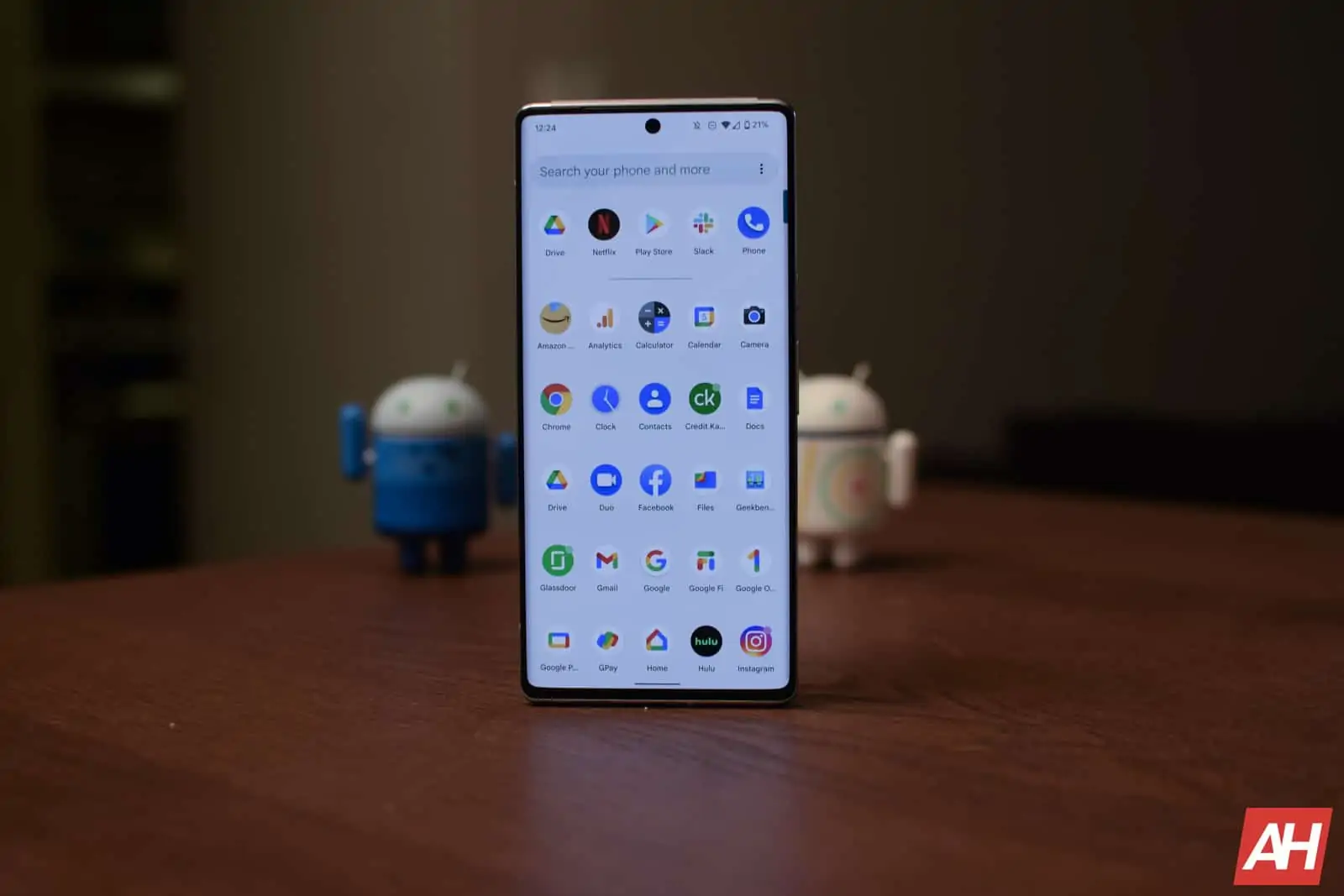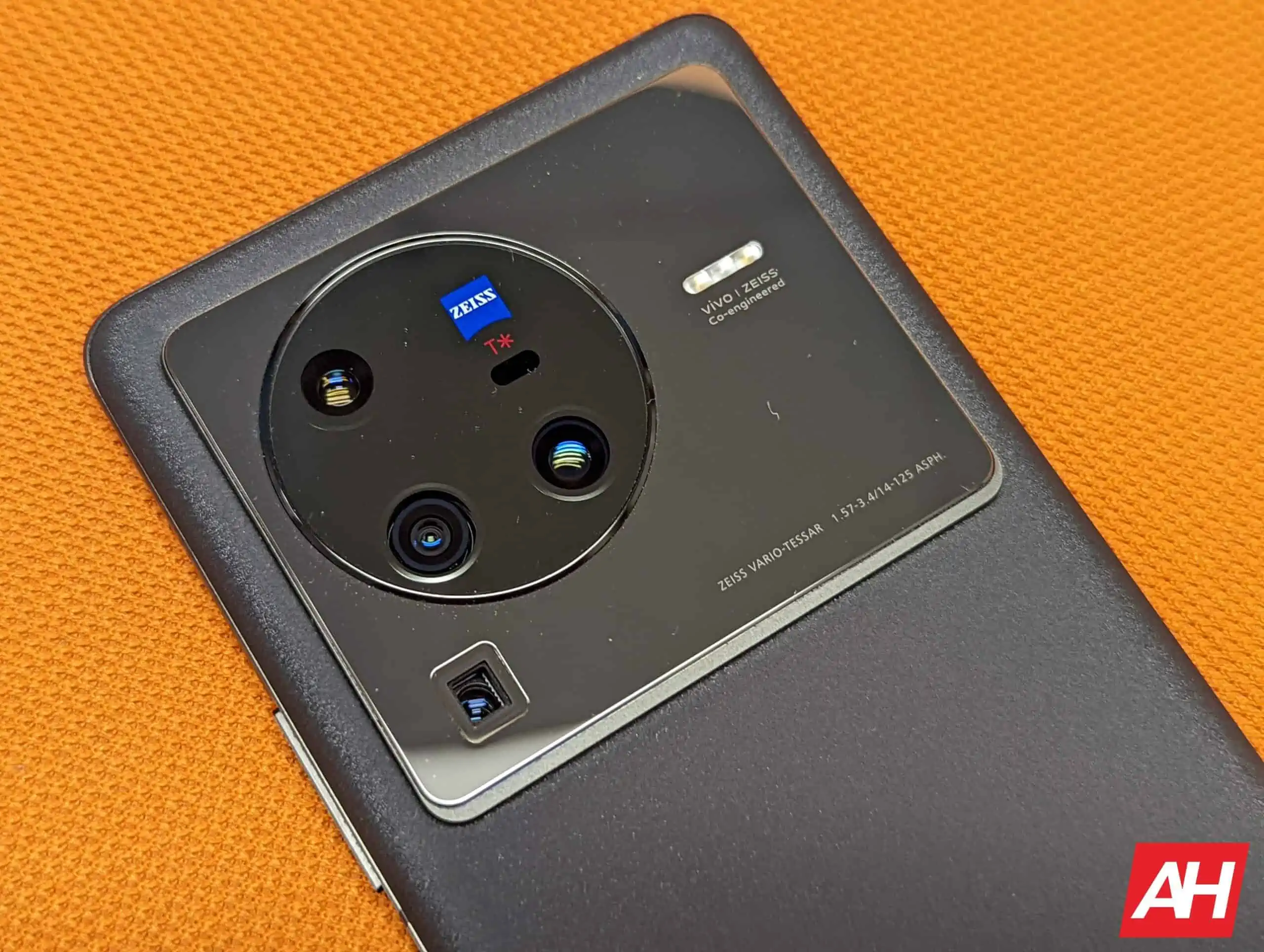When you think of the best smartphone cameras out there, which phones come to mind? Well, the Google Pixel 6 Pro and Vivo X80 Pro are currently regarded to be some of the best, if not the best in that regard. In this article, we’ll compare the Google Pixel 6 Pro vs Vivo X80 Pro, but we won’t focus on cameras alone, of course. We’ll first list the spec sheets of the two phones, and will then go on to compare them in a number of other categories.
These two phones do look somewhat similar from the front, but that’s where design similarities end. They also have considerably different internals, and even software builds. Still, they are both excellent smartphones, and we thoroughly enjoyed reviewing both. If you’re in the market for a flagship smartphone, and you want one with a truly excellent camera, you should consider both of these, presuming they’re available where you live.
Specs
| Google Pixel 6 Pro | Vivo X80 Pro | |
| Screen size | 6.71-inch QHD+ AMOLED curved display (120Hz refresh rate, LTPO) | 6.78-inch QHD+ AMOLED curved display (120Hz refresh rate, LTPO3) |
| Screen resolution | 3120 x 1440 | 3200 x 1440 |
| SoC | Google Tensor | Qualcomm Snapdragon 8 Gen 1 |
| RAM | 12GB (LPDDR5) | 8GB/12GB (LPDDR5) |
| Storage | 128GB/256GB/512GB (UFS 3.1), non-expandable | 256GB/512GB/1TB, non-expandable |
| Rear cameras | 50MP (f/1.9 aperture, 1.2um pixel size, 26mm lens, omnidirectional PDAF, OIS, Laser AF) 12MP (f/2.2 aperture, 1.25um pixel size, 114-degree FoV) 48MP (f/3.5 aperture, 0.8um pixel size, OIS, PDAF, 114-degree FoV, 4x optical zoom) |
50MP (f/1.6 aperture, wide-angle, PDAF, OIS, Laser AF) 8MP (f/3.4 aperture, OIS, PDAF, periscope telephoto, 1.0um pixel size, 5x optical zoom) 12MP (telephoto, f/1.9 aperture, 50mm lens, Dual Pixel PDAF, gimbal OIS, 1.22um pixel size, 2x optical zoom) 48MP (ultrawide, f/2.2 aperture, 114-degree FoV) |
| Front cameras | 11.1MP (f/2.2 aperture, 1.22um pixel size, 20mm lens) | 32MP (f/2.5 aperture, 24mm wide-angle lens, 0.8um pixel size, HDR) |
| Battery | 5,003mAh, non-removable, 23W wired charging (max, slows down after 50%), 23W wireless charging | 4,700mAh, non-removable, 80W wired charging, 50W wireless charging, reverse wired charging |
| Dimensions | 163.9 x 75.9 x 8.9mm | 164.6 x 75.3 x 9.1mm |
| Weight | 210 grams | 215 grams |
| Connectivity | 5G, LTE, NFC, Bluetooth 5.2, Wi-Fi, USB Type-C | 5G, LTE, NFC, Bluetooth 5.2, Wi-Fi, USB Type-C |
| Security | In-display fingerprint scanner (optical) | In-display fingerprint scanner (ultrasonic) |
| OS | Android 12 | Android 12 Funtouch 12 |
| Price | $899 | €1,100 |
| Buy | Vivo |
Google Pixel 6 Pro vs Vivo X80 Pro: Design
The two phones do look similar from the front, but only from the front. They both have extremely thin bezels, curved displays, and a centered display camera hole. They both have rather sharp corners, they’re not as curved as on most other phones. Both of these devices come with a frame made out of metal. The Pixel 6 Pro includes Gorilla Glass Victus on the back. The Vivo X80 Pro, on the other hand, features an eco leather back. Needless to say, that makes the Vivo X80 Pro a bit more grippy.
The Pixel 6 Pro and Vivo X80 Pro are actually almost identical in terms of height and width, as the difference is less than 1mm on both accounts. The same actually goes for thickness as well. The Pixel 6 Pro weighs 210 grams, while the Vivo X80 Pro is only 5 grams heavier. Their back sides look considerably different, by the way. The Pixel 6 Pro employs a camera visor, which goes from one side to the other. The Vivo X80 Pro has a huge camera island on the back, which is placed on top of another glass island.
Both of these phones do feel extremely premium in the hand. If you prefer glass backs, the Pixel 6 Pro is the way to go, though leather does give that extra premium feel. On the other hand, if you prefer larger phones, chances are you’ll like both of these. If you do not, well, they are quite large, and hefty, so keep that in mind. Regardless, both phones are excellent from a design standpoint.
Google Pixel 6 Pro vs Vivo X80 Pro: Display
Both of these phones have excellent displays. The Pixel 6 Pro includes a 6.71-inch QHD+ (3120 x 1440) LTPO AMOLED display. That panel is curved, and it supports a 120Hz refresh rate. It also supports HDR10+ content, and it’s protected by the Gorilla Glass Victus. This display offers a 19.5:9 aspect ratio, while the phone has around 512 ppi.
The Vivo X80 Pro features a 6.78-inch QHD+ (3200 x 1440) LTPO3 AMOLED display. That panel is also curved, and it can show up to 1 billion colors. A 120Hz refresh rate is also supported, and the phone can project HDR10+ content. This panel gets extremely bright, at 1,500 nits of peak brightness. We’re looking at a 20:9 display aspect ratio here, and a ppi of around 517.

Now, both displays are truly excellent. They’re vibrant, have excellent view angles, and they’re extremely responsive. They’re also extremely sharp at the same time. The Vivo X80 Pro’s panel does get brighter, though, so keep that in mind if you’re planning to use it under direct sunlight frequently. The Vivo X80 Pro’s display is technically better, but both displays are truly great, and quite honestly, you can’t go wrong here.
Google Pixel 6 Pro vs Vivo X80 Pro: Performance
Is the performance any good, though? Well, yes, it’s excellent actually. That goes for both devices. The Pixel 6 Pro is fueled by the Google Tensor SoC. The company also included 12GB of LPDDR5 RAM and UFS 3.1 flash storage. The Vivo X80 Pro comes with the Snapdragon 8 Gen 1 SoC, along with 8GB or 12GB of LPDDR5 RAM, and UFS 3.1 flash storage is also a part of the package.
Both of these phones are smooth as butter when it comes to performance. That goes for both regular, everyday tasks, and gaming. Both do get quite warm during gaming sessions, but that’s per course for smartphones, pretty much. Neither gets too hot, though. In fact, the Vivo X80 Pro handles that Snapdragon 8 Gen 1 SoC like a champ. The software builds here are considerably different, though. The Pixel 6 Pro comes with basically stock Android with Pixel features, while the Vivo X80 Pro includes Funtouch OS. Both versions of the software are great, and it’s all a matter of preference.
Google Pixel 6 Pro vs Vivo X80 Pro: Battery
The battery life is also something you don’t need to worry about when it comes to these phones. They both offer excellent battery life. Before we get to that, though, let’s talk about the hardware. The Pixel 6 Pro has a 5,003mAh battery, while the Vivo X80 Pro includes a 4,700mAh battery. So, there is a difference in sheer battery capacity, but thanks to Vivo’s optimizations and display, these two devices have comparable battery life, at least in our testing.
We were able to cross the 7-hour screen-on-time mark with both devices, and sometimes even got over 8 hours of screen-on time. Do note that we’re not avid gamers, so playing games was the bare minimum. Your mileage may, of course, vary, as we all use our phones differently, in different areas, with different apps, and so on. One thing is for sure, though, both of these devices offer really good battery life, to say the least.
What about charging, though? Well, that’s where the Vivo X80 Pro trumps the Pixel 6 Pro. The Pixel 6 Pro supports 23W wired charging, along with 23W wireless charging, and 5W reverse wireless charging. Do note that 23W is the absolute maximum you’ll get via a wire, and the phone slows down after it crosses 50 percent. It will take you around 2 hours to fully charge the device.
The Vivo X80 Pro supports 80W wired, 50W wireless, and also reverse wired charging. Charging this phone from 0 to 100-percent can be done for around 35-38 minutes. Its wireless charging is also blazing fast, presuming you have Vivo’s wireless charger, of course.
Google Pixel 6 Pro vs Vivo X80 Pro: Cameras
As I’ve already mentioned earlier in the article, these two phones are some of the best camera smartphones on the market. Google’s Pixel phones are well-known for their camera quality. Vivo not so much, mainly due to the fact it’s not so well-known in some markets. The company has been making excellent camera smartphones for years now, and this one really takes the cake.
The Pixel 6 Pro has a 50-megapixel main camera, a 48-megapixel telephoto camera, and a 12-megapixel ultrawide camera. The Vivo X80 Pro includes a 50-megapixel main camera, a 12-megapixel telephoto unit, and a 48-megapixel ultrawide camera. On top of that, a fourth, 8-megapixel periscope telephoto camera is also included. That camera enables those crazy zoom options, it supports 5x optical zoom, and up to 60x digital zoom.

So, how do they compare? Well, these are some of the best pics you’ll see from a phone. In daylight, you’ll get really detailed, and sharp images. Both have a wide dynamic range, and offer vivid images. Do note that on the Vivo, you have options between regular and ZEISS shooting modes. The ZEISS mode will offer more natural colors, while the normal mode will boost up the colors. The results are excellent either way, but different.
In low light, they both shine, but with one major difference, the Vivo X80 Pro handles light flares much better. The phone’s cameras come with ZEISS T* coating, which handles light flares like a champ. The Pixel 6 Pro can have issues with that. The Pixel 6 Pro is slightly more reliable as a camera overall, as it captures a proper picture basically every time, with the exception of light flares. The Vivo X80 Pro is not far from that, but it’s still not on the same level of consistency. It is a more versatile camera, and can walk side-by-side with what Google is offering, if not even in front of it. You really can’t go wrong with these two phones as far as cameras are concerned.
Audio
Much like almost every other mainstream flagship smartphone, neither of these devices includes a 3.5mm headphone jack. They do both come equipped with Bluetooth 5.2, though, along with A2DP, LE, and aptX HD.
They also include stereo speakers. The Vivo X80 Pro can produce 32-bit sound, and truth be said, its speakers do sound a bit richer in comparison, but not by much, they’re comparable. Both sets of speakers do get quite loud, and do offer some bass, even.
